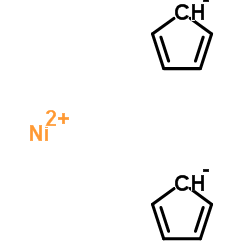毒理学数据:
1.急性毒性LD50:250mg/kg(大鼠腹腔)
2.刺激性 暂无资料
3.致突变性 形态学转化:仓鼠胚胎5μmol/L;仓鼠肾400mg/L。
4.致癌性 IARC致癌性评论:G2B,可疑人类致癌物。
5.其他 大鼠经口最低中毒剂量(TDLo):158mg/kg(多代用药),胚胎毒性,胎鼠死亡。
生态学数据:
1.生态毒性 暂无资料
2.生物降解性 暂无资料
3.非生物降解性 暂无资料
CHEMICAL IDENTIFICATION
-
RTECS NUMBER :
-
QR5950000
-
CHEMICAL NAME :
-
Nickel
-
CAS REGISTRY NUMBER :
-
7440-02-0
-
LAST UPDATED :
-
199712
-
DATA ITEMS CITED :
-
102
-
MOLECULAR FORMULA :
-
Ni
-
MOLECULAR WEIGHT :
-
58.71
-
WISWESSER LINE NOTATION :
-
NI
HEALTH HAZARD DATA
ACUTE TOXICITY DATA
-
TYPE OF TEST :
-
LDLo - Lowest published lethal dose
-
ROUTE OF EXPOSURE :
-
Oral
-
SPECIES OBSERVED :
-
Rodent - rat
-
DOSE/DURATION :
-
5 gm/kg
-
TOXIC EFFECTS :
-
Details of toxic effects not reported other than lethal dose value
-
TYPE OF TEST :
-
LD50 - Lethal dose, 50 percent kill
-
ROUTE OF EXPOSURE :
-
Intraperitoneal
-
SPECIES OBSERVED :
-
Rodent - rat
-
DOSE/DURATION :
-
250 mg/kg
-
TOXIC EFFECTS :
-
Vascular - regional or general arteriolar or venous dilation Liver - other changes Blood - other changes
-
TYPE OF TEST :
-
LDLo - Lowest published lethal dose
-
ROUTE OF EXPOSURE :
-
Intratracheal
-
SPECIES OBSERVED :
-
Rodent - rat
-
DOSE/DURATION :
-
12 mg/kg
-
TOXIC EFFECTS :
-
Details of toxic effects not reported other than lethal dose value
-
TYPE OF TEST :
-
LDLo - Lowest published lethal dose
-
ROUTE OF EXPOSURE :
-
Intravenous
-
SPECIES OBSERVED :
-
Rodent - mouse
-
DOSE/DURATION :
-
50 mg/kg
-
TOXIC EFFECTS :
-
Behavioral - somnolence (general depressed activity) Behavioral - fluid intake Kidney, Ureter, Bladder - proteinuria
-
TYPE OF TEST :
-
LDLo - Lowest published lethal dose
-
ROUTE OF EXPOSURE :
-
Subcutaneous
-
SPECIES OBSERVED :
-
Mammal - cat
-
DOSE/DURATION :
-
12500 ug/kg
-
TOXIC EFFECTS :
-
Details of toxic effects not reported other than lethal dose value
-
TYPE OF TEST :
-
LDLo - Lowest published lethal dose
-
ROUTE OF EXPOSURE :
-
Intraperitoneal
-
SPECIES OBSERVED :
-
Rodent - rabbit
-
DOSE/DURATION :
-
7 mg/kg
-
TOXIC EFFECTS :
-
Details of toxic effects not reported other than lethal dose value
-
TYPE OF TEST :
-
LDLo - Lowest published lethal dose
-
ROUTE OF EXPOSURE :
-
Subcutaneous
-
SPECIES OBSERVED :
-
Rodent - rabbit
-
DOSE/DURATION :
-
7500 ug/kg
-
TOXIC EFFECTS :
-
Details of toxic effects not reported other than lethal dose value
-
TYPE OF TEST :
-
LDLo - Lowest published lethal dose
-
ROUTE OF EXPOSURE :
-
Oral
-
SPECIES OBSERVED :
-
Rodent - guinea pig
-
DOSE/DURATION :
-
5 mg/kg
-
TOXIC EFFECTS :
-
Details of toxic effects not reported other than lethal dose value
-
TYPE OF TEST :
-
TDLo - Lowest published toxic dose
-
ROUTE OF EXPOSURE :
-
Oral
-
SPECIES OBSERVED :
-
Rodent - rat
-
DOSE/DURATION :
-
500 mg/kg/5D-I
-
TOXIC EFFECTS :
-
Lungs, Thorax, or Respiration - fibrosis, focal (pneumoconiosis) Related to Chronic Data - death
-
TYPE OF TEST :
-
TCLo - Lowest published toxic concentration
-
ROUTE OF EXPOSURE :
-
Inhalation
-
SPECIES OBSERVED :
-
Rodent - rat
-
DOSE/DURATION :
-
100 ug/m3/24H/17W-C
-
TOXIC EFFECTS :
-
Liver - liver function tests impaired Blood - changes in serum composition (e.g. TP, bilirubin, cholesterol) Blood - changes in erythrocyte (RBC) count
-
TYPE OF TEST :
-
TDLo - Lowest published toxic dose
-
ROUTE OF EXPOSURE :
-
Intravenous
-
SPECIES OBSERVED :
-
Rodent - rat
-
DOSE/DURATION :
-
50 mg/kg/5D-I
-
TOXIC EFFECTS :
-
Lungs, Thorax, or Respiration - fibrosis, focal (pneumoconiosis) Related to Chronic Data - death
-
TYPE OF TEST :
-
TDLo - Lowest published toxic dose
-
ROUTE OF EXPOSURE :
-
Oral
-
SPECIES OBSERVED :
-
Rodent - mouse
-
DOSE/DURATION :
-
500 mg/kg/5D-I
-
TOXIC EFFECTS :
-
Lungs, Thorax, or Respiration - fibrosis, focal (pneumoconiosis) Related to Chronic Data - death
-
TYPE OF TEST :
-
TDLo - Lowest published toxic dose
-
ROUTE OF EXPOSURE :
-
Intravenous
-
SPECIES OBSERVED :
-
Rodent - mouse
-
DOSE/DURATION :
-
100 mg/kg/5D-I
-
TOXIC EFFECTS :
-
Lungs, Thorax, or Respiration - fibrosis, focal (pneumoconiosis) Related to Chronic Data - death
-
TYPE OF TEST :
-
TCLo - Lowest published toxic concentration
-
ROUTE OF EXPOSURE :
-
Inhalation
-
SPECIES OBSERVED :
-
Rodent - rabbit
-
DOSE/DURATION :
-
1700 ug/m3/6H/5W-I
-
TOXIC EFFECTS :
-
Lungs, Thorax, or Respiration - other changes Lungs, Thorax, or Respiration - changes in lung weight Biochemical - Metabolism (Intermediary) - lipids including transport
-
TYPE OF TEST :
-
TCLo - Lowest published toxic concentration
-
ROUTE OF EXPOSURE :
-
Inhalation
-
SPECIES OBSERVED :
-
Rodent - rabbit
-
DOSE/DURATION :
-
130 ug/m3/6H/35W-I
-
TOXIC EFFECTS :
-
Lungs, Thorax, or Respiration - other changes Biochemical - Metabolism (Intermediary) - lipids including transport
-
TYPE OF TEST :
-
TCLo - Lowest published toxic concentration
-
ROUTE OF EXPOSURE :
-
Inhalation
-
SPECIES OBSERVED :
-
Rodent - rabbit
-
DOSE/DURATION :
-
1 mg/m3/6H/26W-I
-
TOXIC EFFECTS :
-
Lungs, Thorax, or Respiration - other changes
-
TYPE OF TEST :
-
TDLo - Lowest published toxic dose
-
ROUTE OF EXPOSURE :
-
Intravenous
-
SPECIES OBSERVED :
-
Rodent - rabbit
-
DOSE/DURATION :
-
50 mg/kg/5D-I
-
TOXIC EFFECTS :
-
Lungs, Thorax, or Respiration - fibrosis, focal (pneumoconiosis) Related to Chronic Data - death
-
TYPE OF TEST :
-
TDLo - Lowest published toxic dose
-
ROUTE OF EXPOSURE :
-
Subcutaneous
-
SPECIES OBSERVED :
-
Rodent - rat
-
DOSE/DURATION :
-
3000 mg/kg/6W-I
-
TOXIC EFFECTS :
-
Tumorigenic - equivocal tumorigenic agent by RTECS criteria Skin and Appendages - tumors Tumorigenic - tumors at site of application
-
TYPE OF TEST :
-
TDLo - Lowest published toxic dose
-
ROUTE OF EXPOSURE :
-
Intramuscular
-
SPECIES OBSERVED :
-
Rodent - rat
-
DOSE/DURATION :
-
56 mg/kg
-
TOXIC EFFECTS :
-
Tumorigenic - Carcinogenic by RTECS criteria Musculoskeletal - tumors Tumorigenic - tumors at site of application
-
TYPE OF TEST :
-
TDLo - Lowest published toxic dose
-
ROUTE OF EXPOSURE :
-
Intrapleural
-
SPECIES OBSERVED :
-
Rodent - rat
-
DOSE/DURATION :
-
100 mg/kg/21W-I
-
TOXIC EFFECTS :
-
Tumorigenic - equivocal tumorigenic agent by RTECS criteria Tumorigenic - tumors at site of application
-
TYPE OF TEST :
-
TDLo - Lowest published toxic dose
-
ROUTE OF EXPOSURE :
-
Parenteral
-
SPECIES OBSERVED :
-
Rodent - rat
-
DOSE/DURATION :
-
40 mg/kg/52W-I
-
TOXIC EFFECTS :
-
Tumorigenic - equivocal tumorigenic agent by RTECS criteria Lungs, Thorax, or Respiration - tumors Reproductive - Tumorigenic effects - uterine tumors
-
TYPE OF TEST :
-
TDLo - Lowest published toxic dose
-
ROUTE OF EXPOSURE :
-
Implant
-
SPECIES OBSERVED :
-
Rodent - rat
-
DOSE/DURATION :
-
250 mg/kg
-
TOXIC EFFECTS :
-
Tumorigenic - Carcinogenic by RTECS criteria Skin and Appendages - tumors Tumorigenic - tumors at site of application
-
TYPE OF TEST :
-
TDLo - Lowest published toxic dose
-
ROUTE OF EXPOSURE :
-
Intramuscular
-
SPECIES OBSERVED :
-
Rodent - mouse
-
DOSE/DURATION :
-
200 mg/kg
-
TOXIC EFFECTS :
-
Tumorigenic - neoplastic by RTECS criteria Tumorigenic - tumors at site of application
-
TYPE OF TEST :
-
TDLo - Lowest published toxic dose
-
ROUTE OF EXPOSURE :
-
Implant
-
SPECIES OBSERVED :
-
Rodent - rabbit
-
DOSE/DURATION :
-
165 mg/kg/2Y-I
-
TOXIC EFFECTS :
-
Tumorigenic - neoplastic by RTECS criteria Reproductive - Tumorigenic effects - uterine tumors Tumorigenic - tumors at site of application
-
TYPE OF TEST :
-
TCLo - Lowest published toxic concentration
-
ROUTE OF EXPOSURE :
-
Inhalation
-
SPECIES OBSERVED :
-
Rodent - guinea pig
-
DOSE/DURATION :
-
15 mg/m3/91W-I
-
TOXIC EFFECTS :
-
Tumorigenic - equivocal tumorigenic agent by RTECS criteria Lungs, Thorax, or Respiration - tumors Lungs, Thorax, or Respiration - bronchiogenic carcinoma
-
TYPE OF TEST :
-
TDLo - Lowest published toxic dose
-
ROUTE OF EXPOSURE :
-
Intramuscular
-
SPECIES OBSERVED :
-
Rodent - hamster
-
DOSE/DURATION :
-
200 mg/kg/21W-I
-
TOXIC EFFECTS :
-
Tumorigenic - equivocal tumorigenic agent by RTECS criteria Musculoskeletal - tumors Tumorigenic - tumors at site of application
-
TYPE OF TEST :
-
TD - Toxic dose (other than lowest)
-
ROUTE OF EXPOSURE :
-
Intramuscular
-
SPECIES OBSERVED :
-
Rodent - rat
-
DOSE/DURATION :
-
58 mg/kg
-
TOXIC EFFECTS :
-
Tumorigenic - equivocal tumorigenic agent by RTECS criteria Tumorigenic - tumors at site of application
-
TYPE OF TEST :
-
TD - Toxic dose (other than lowest)
-
ROUTE OF EXPOSURE :
-
Implant
-
SPECIES OBSERVED :
-
Rodent - rat
-
DOSE/DURATION :
-
23 mg/kg
-
TOXIC EFFECTS :
-
Tumorigenic - equivocal tumorigenic agent by RTECS criteria Tumorigenic - tumors at site of application
-
TYPE OF TEST :
-
TD - Toxic dose (other than lowest)
-
ROUTE OF EXPOSURE :
-
Intramuscular
-
SPECIES OBSERVED :
-
Rodent - rat
-
DOSE/DURATION :
-
125 mg/kg/13W-I
-
TOXIC EFFECTS :
-
Tumorigenic - neoplastic by RTECS criteria Tumorigenic - tumors at site of application
-
TYPE OF TEST :
-
TD - Toxic dose (other than lowest)
-
ROUTE OF EXPOSURE :
-
Intramuscular
-
SPECIES OBSERVED :
-
Rodent - mouse
-
DOSE/DURATION :
-
800 mg/kg/13W-I
-
TOXIC EFFECTS :
-
Tumorigenic - neoplastic by RTECS criteria Tumorigenic - tumors at site of application
-
TYPE OF TEST :
-
TD - Toxic dose (other than lowest)
-
ROUTE OF EXPOSURE :
-
Intramuscular
-
SPECIES OBSERVED :
-
Rodent - rat
-
DOSE/DURATION :
-
90 mg/kg/18W-I
-
TOXIC EFFECTS :
-
Tumorigenic - equivocal tumorigenic agent by RTECS criteria Tumorigenic - tumors at site of application
-
TYPE OF TEST :
-
TD - Toxic dose (other than lowest)
-
ROUTE OF EXPOSURE :
-
Intramuscular
-
SPECIES OBSERVED :
-
Rodent - rat
-
DOSE/DURATION :
-
889 ug/kg
-
TOXIC EFFECTS :
-
Tumorigenic - equivocal tumorigenic agent by RTECS criteria Musculoskeletal - tumors Tumorigenic - tumors at site of application
-
TYPE OF TEST :
-
TD - Toxic dose (other than lowest)
-
ROUTE OF EXPOSURE :
-
Intrapleural
-
SPECIES OBSERVED :
-
Rodent - rat
-
DOSE/DURATION :
-
1250 mg/kg/17W-I
-
TOXIC EFFECTS :
-
Tumorigenic - equivocal tumorigenic agent by RTECS criteria Musculoskeletal - tumors Tumorigenic - tumors at site of application
-
TYPE OF TEST :
-
TD - Toxic dose (other than lowest)
-
ROUTE OF EXPOSURE :
-
Intrapleural
-
SPECIES OBSERVED :
-
Rodent - rat
-
DOSE/DURATION :
-
125 mg/kg/21W-I
-
TOXIC EFFECTS :
-
Tumorigenic - equivocal tumorigenic agent by RTECS criteria Tumorigenic - tumors at site of application
-
TYPE OF TEST :
-
TD - Toxic dose (other than lowest)
-
ROUTE OF EXPOSURE :
-
Intramuscular
-
SPECIES OBSERVED :
-
Rodent - rat
-
DOSE/DURATION :
-
200 mg/kg/21W-I
-
TOXIC EFFECTS :
-
Tumorigenic - neoplastic by RTECS criteria Musculoskeletal - tumors Tumorigenic - tumors at site of application
-
TYPE OF TEST :
-
TD - Toxic dose (other than lowest)
-
ROUTE OF EXPOSURE :
-
Intramuscular
-
SPECIES OBSERVED :
-
Rodent - rat
-
DOSE/DURATION :
-
1 gm/kg/17W-I
-
TOXIC EFFECTS :
-
Tumorigenic - Carcinogenic by RTECS criteria Tumorigenic - tumors at site of application
-
TYPE OF TEST :
-
TDLo - Lowest published toxic dose
-
ROUTE OF EXPOSURE :
-
Oral
-
DOSE :
-
158 mg/kg
-
SEX/DURATION :
-
multigenerations
-
TOXIC EFFECTS :
-
Reproductive - Effects on Embryo or Fetus - fetotoxicity (except death, e.g., stunted fetus) Reproductive - Effects on Embryo or Fetus - fetal death
MUTATION DATA
-
TYPE OF TEST :
-
Morphological transformation
-
TEST SYSTEM :
-
Rodent - hamster Embryo
-
REFERENCE :
-
TOXID9 Toxicologist. (Soc. of Toxicology, Inc., 475 Wolf Ledge Parkway, Akron, OH 44311) V.1- 1981- Volume(issue)/page/year: 1,132,1981 *** REVIEWS *** ACGIH TLV-TWA 1 mg/m3 DTLVS* The Threshold Limit Values (TLVs) and Biological Exposure Indices (BEIs) booklet issues by American Conference of Governmental Industrial Hygienists (ACGIH), Cincinnati, OH, 1996 Volume(issue)/page/year: TLV/BEI,1997 IARC Cancer Review:Animal Sufficient Evidence IMEMDT IARC Monographs on the Evaluation of Carcinogenic Risk of Chemicals to Man. (WHO Publications Centre USA, 49 Sheridan Ave., Albany, NY 12210) V.1- 1972- Volume(issue)/page/year: 49,257,1990 IARC Cancer Review:Human Sufficient Evidence IMSUDL IARC Monographs, Supplement. (WHO Publications Centre USA, 49 Sheridan Ave., Albany, NY 12210) No.1- 1979- Volume(issue)/page/year: 7,264,1987 IARC Cancer Review:Human Inadequate Evidence IMEMDT IARC Monographs on the Evaluation of Carcinogenic Risk of Chemicals to Man. (WHO Publications Centre USA, 49 Sheridan Ave., Albany, NY 12210) V.1- 1972- Volume(issue)/page/year: 49,257,1990 IARC Cancer Review:Group 2B IMEMDT IARC Monographs on the Evaluation of Carcinogenic Risk of Chemicals to Man. (WHO Publications Centre USA, 49 Sheridan Ave., Albany, NY 12210) V.1- 1972- Volume(issue)/page/year: 49,257,1990 TOXICOLOGY REVIEW ACLSCP Annals of Clinical and Laboratory Science. (1833 Delancey Pl., Philadelphia, PA 19103) V.1- 1971- Volume(issue)/page/year: 3,156,1973 TOXICOLOGY REVIEW KOTTAM Kogai to Taisaku. Journal of Environmental Pollution Control. (Kogai Taisaku Gijutsu Dokokai, Shuwa-Akasaka Bldg., 9-1-244, Akasaka, Minato-ku, Tokyo 107, Japan) V.1- 1965- Volume(issue)/page/year: 11,1300,1975 TOXICOLOGY REVIEW MIBUBI Mikrobiyoloji Bulteni. Bulletin of Microbiology. (c/o Dr. A. Tevfik Cenqiz, Ankara Universitesi Tip Fakultesi Mikrobiyoloji Ana Bilim Dah, Ankara, Turkey) V.1- 1967- Volume(issue)/page/year: 9,321,1975 TOXICOLOGY REVIEW FCTXAV Food and Cosmetics Toxicology. (London, UK) V.1-19, 1963-81. For publisher information, see FCTOD7. Volume(issue)/page/year: 9,105,1971 TOXICOLOGY REVIEW 85DHAX "Medical and Biologic Effects of Environmental Pollutants Series," Washington, DC, National Academy of Sciences, 1972-77 Volume(issue)/page/year: Ni,168,1975 TOXICOLOGY REVIEW 85CVA2 "Oncology 1970, Proceedings of the Tenth International Cancer Congress," Chicago, Year Book Medical Pub., 1971 Volume(issue)/page/year: 5,63,1970 TOXICOLOGY REVIEW 31BYAP "Experimental Lung Cancer: Carcinogenesis and Bioassays, International Symposium, 1974," Karbe, E., and J.F. Park, eds., Springer-Verlag New York, Inc., 1974 Volume(issue)/page/year: -,93,1974 TOXICOLOGY REVIEW NTIS** National Technical Information Service. (Springfield, VA 22161) Formerly U.S. Clearinghouse for Scientific & Technical Information. Volume(issue)/page/year: CONF-691001 TOXICOLOGY REVIEW GSAMAQ Memoir--Geological Society of America. (POB 9140, Boulder, CO 80302) No.1- 1934- Volume(issue)/page/year: 123,109,1971 TOXICOLOGY REVIEW PEXTAR Progress in Experimental Tumor Research. (S. Karger AG, Postfach CH-4009 Basel, Switzerland) V.1- 1960- Volume(issue)/page/year: 12,102,1969 TOXICOLOGY REVIEW DICHAK Diseases of the Chest. (Chicago, IL) V.1-56, 1935-69. For publisher information, see CHETBF. Volume(issue)/page/year: 54,527,1968 TOXICOLOGY REVIEW AMTODM Advances in Modern Toxicology. (John Wiley & Sons, Inc., 605 Third Ave., New York, NY 10016) V.1, 1976-79. Discontinued. Volume(issue)/page/year: 3,209,1977 *** U.S. STANDARDS AND REGULATIONS *** MSHA STANDARD-air:TWA 1 mg/m3 DTLWS* "Documentation of the Threshold Limit Values for Substances in Workroom Air," Supplements. For publisher information, see 85INA8. Volume(issue)/page/year: 3,24,1973 OSHA PEL (Gen Indu):8H TWA 1 mg(Ni)/m3 CFRGBR Code of Federal Regulations. (U.S. Government Printing Office, Supt. of Documents, Washington, DC 20402) Volume(issue)/page/year: 29,1910.1000,1994 OSHA PEL (Construc):8H TWA 1 mg(Ni)/m3 CFRGBR Code of Federal Regulations. (U.S. Government Printing Office, Supt. of Documents, Washington, DC 20402) Volume(issue)/page/year: 29,1926.55,1994 OSHA PEL (Shipyard):8H TWA 1 mg(Ni)/m3 CFRGBR Code of Federal Regulations. (U.S. Government Printing Office, Supt. of Documents, Washington, DC 20402) Volume(issue)/page/year: 29,1915.1000,1993 OSHA PEL (Fed Cont):8H TWA 1 mg(Ni)/m3 CFRGBR Code of Federal Regulations. (U.S. Government Printing Office, Supt. of Documents, Washington, DC 20402) Volume(issue)/page/year: 41,50-204.50,1994 *** OCCUPATIONAL EXPOSURE LIMITS *** OEL-ARAB Republic of Egypt:TWA 0.1 mg/m3 JAN 1993 OEL-AUSTRALIA:TWA 1 mg/m3 JAN 1993 OEL-BELGIUM:TWA 1 mg/m3 (insoluble compounds) JAN 1993 OEL-DENMARK:TWA 0.05 mg/m3;Carcinogen JAN 1993 OEL-DENMARK:TWA 0.5 mg/m3 (dust) JAN 1993 OEL-DENMARK:TWA 1 mg/m3 (insoluble compounds) JAN 1993 OEL-FINLAND:TWA 0.1 mg/m3;Skin;Carcinogen (insoluble compounds) JAN 1993 OEL-FRANCE:TWA 1 mg/m3 JAN 1993 OEL-GERMANY;Carcinogen JAN 1993 OEL-HUNGARY:STEL 0.005 mg/m3;Carcinogen (insoluble compounds) JAN 1993 OEL-JAPAN:TWA 1 mg/m3;Carcinogen JAN 1993 OEL-THE NETHERLANDS:TWA 0.1 mg/m3 JAN 1993 OEL-THE NETHERLANDS:TWA 1 mg/m3 (insoluble compounds) JAN 1993 OEL-THE PHILIPPINES:TWA 1 mg/m3 JAN 1993 OEL-RUSSIA:STEL 0.05 mg/m3 JAN 1993 OEL-SWEDEN:TWA 0.5 mg/m3 (dust) JAN 1993 OEL-SWITZERLAND:TWA 0.5 mg/m3 (insoluble compounds) JAN 1993 OEL-SWITZERLAND:TWA 0.5 mg/m3;Carcinogen JAN 1993 OEL-THAILAND:TWA 1 mg/m3 JAN 1993 OEL-UNITED KINGDOM:TWA 0.5 mg/m3 (insoluble compounds) JAN 1993 OEL-UNITED KINGDOM:TWA 0.5 mg/m3 (dust) JAN 1993 OEL-UNITED KINGDOM:TWA 1 mg/m3 JAN 1993 OEL IN BULGARIA, COLOMBIA, JORDAN, KOREA check ACGIH TLV OEL IN NEW ZEALAND, SINGAPORE, VIETNAM check ACGIH TLV *** NIOSH STANDARDS DEVELOPMENT AND SURVEILLANCE DATA *** NIOSH RECOMMENDED EXPOSURE LEVEL (REL) : NIOSH REL TO NICKEL, INORGANIC-air:10H CA TWA 0.015 mg(Ni)/m3 REFERENCE : NIOSH* National Institute for Occupational Safety and Health, U.S. Dept. of Health, Education, and Welfare, Reports and Memoranda. Volume(issue)/page/year: DHHS #92-100,1992 NIOSH OCCUPATIONAL EXPOSURE SURVEY DATA : NOHS - National Occupational Hazard Survey (1974) NOHS Hazard Code - 50420 No. of Facilities: 1867 (estimated) No. of Industries: 55 No. of Occupations: 52 No. of Employees: 23272 (estimated) NOES - National Occupational Exposure Survey (1983) NOES Hazard Code - X5096 No. of Facilities: 7 (estimated) No. of Industries: 2 No. of Occupations: 4 No. of Employees: 110 (estimated) NOES - National Occupational Exposure Survey (1983) NOES Hazard Code - X5918 No. of Facilities: 678 (estimated) No. of Industries: 14 No. of Occupations: 17 No. of Employees: 6440 (estimated) No. of Female Employees: 611 (estimated) NOES - National Occupational Exposure Survey (1983) NOES Hazard Code - X5986 No. of Facilities: 1124 (estimated) No. of Industries: 14 No. of Occupations: 15 No. of Employees: 10233 (estimated) No. of Female Employees: 80 (estimated) NOES - National Occupational Exposure Survey (1983) NOES Hazard Code - X8294 No. of Facilities: 9 (estimated) No. of Industries: 1 No. of Occupations: 1 No. of Employees: 611 (estimated) NOES - National Occupational Exposure Survey (1983) NOES Hazard Code - 50420 No. of Facilities: 32771 (estimated) No. of Industries: 260 No. of Occupations: 116 No. of Employees: 507681 (estimated) No. of Female Employees: 19673 (estimated)
|





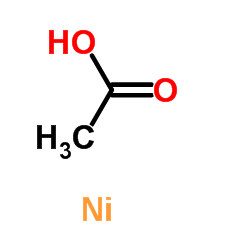

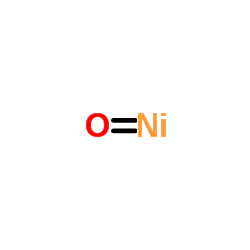

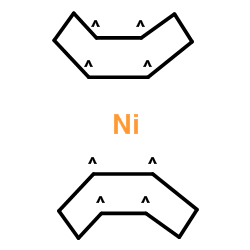




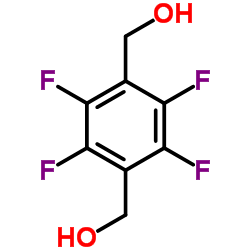
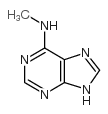
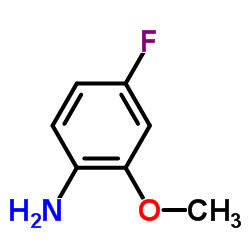
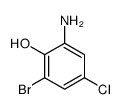
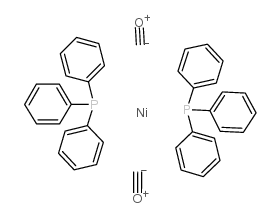
![[tricarbonyl(triphenylphosphine)nickel]结构式](https://image.chemsrc.com/caspic/152/14917-13-6.png)
